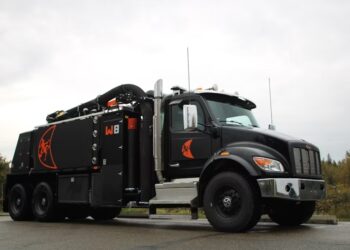A spike in commercial bankruptcies is highlighting the importance of creditors’ rights as equipment lenders work to recover assets and unsecured debt.
Total bankruptcy filings reached 276,126 at midyear, up 10% year over year, according to a July 3 report by legal and compliance services platform Epiq, which reported a 62% month-over-month surge in commercial Chapter 11 filings in May. Commercial bankruptcy filings increased 14.7% YoY during the 12-month period ending May 31, according to the Federal Judiciary of the United States.
Growing debt loads can be attributed to “elevated prices, increased borrowing costs and uncertain geopolitical events,” American Bankruptcy Institute Executive Director Amy Quackenboss stated in the recent Epiq report.
Moreover, at least 20 freight companies have filed for Chapter 11 since the second quarter, according to documents obtained by Equipment Finance News. Some cases involve equipment lenders with roughly $1 million or more in unsecured claims tied to multiple assets.
First steps of negotiations
For creditors, keys to successful negotiations in Chapter 11 proceedings start with understanding whether the debtor plans to liquidate or continue operations, Lisa Tancredi, partner at national law firm Womble Bond Dickinson, told EFN. Tancredi, whose specialties include bankruptcy and creditor rights, said next steps for resolving disputes depend on whether the creditor is secured.
“As a lender, when you’re unsecured, it’s very difficult to maximize your recovery.”
— Lisa Tancredi, partner, Womble Bond Dickinson
“If you can characterize your transaction as a lease to specific equipment, a true lease, then you have different remedies,” she said. “If the debtor wants to retain the equipment, it will need to assume the lease, in which case the debtor would have to cure all the defaults and continue to perform going forward.”
If the lease is rejected, the lender would be entitled to repossess the equipment, she said.
Seeking “adequate assurance” is also crucial when negotiating with debtors that plan to continue operating, Sara Costanzo, a shareholder and creditor rights attorney at Weltman, Weinberg & Reis in Cleveland, told EFN. “Adequate assurance” refers to a debtor’s obligation to provide sufficient proof to a creditor that it can fulfill its obligations under a loan or lease contract, even after filing bankruptcy.
“They’re entitled to ask the court to require that the debtor pay [adequate assurance] to make sure that during the course of the bankruptcy petition, while they’re trying to right the ship, that they don’t make the creditor in a worse position than they were before the bankruptcy,” she said. “So, part of the debt is in a bucket called pre-petition debt, and then post-petition debt would be applicable to that adequate assurance.”
During this process, an attorney should help clients identify what they need for the next several months to “make sure that they’re going to be paid and adequately assured,” Costanzo said.
“If there’s collateral out there, and if they intend on keeping the collateral, are they reaffirming that debt to keep the collateral?” she said.
What about large unsecured claims?
Equipment lenders with especially large unsecured claims have a steeper hill to climb to secure recoveries and assets. For example, a June 15 Chapter 11 filing by logistics firm Dolche Truckload shows that M&T Bank is owed $950,000 tied to 19 trucks.
For large claims such as this, it may be advantageous for the lender to try to join the creditors committee, Womble Bond Dickinson’s Tancredi said. In most Chapter 11 cases, a United States Trustee appoints a committee, typically comprising the largest unsecured creditors and a representative of the unsecured creditor body as a whole.
“The creditors committee is really guarding what’s available for unsecured creditors,” Tancredi said. “Your remedy is going to come from the collective action of the committee, because general unsecured creditors are treated collectively. … So, if I’m representing a creditor going into a case, the first thing I’m going to want to try to figure out is, what exactly are the creditors interests in the debtor?”
Understanding the nuances of the relationship with the debtor can help creditors “take advantage of any leverage that you might have,” she said.
Assessing the location and condition of collateral is also important for resolving large claims, Weltman’s Costanzo said.
Register here for the free Equipment Finance News webinar “Technologies to Advance Your Equipment Financing Business” set for Thursday, July 17, at 11 a.m. ET.








